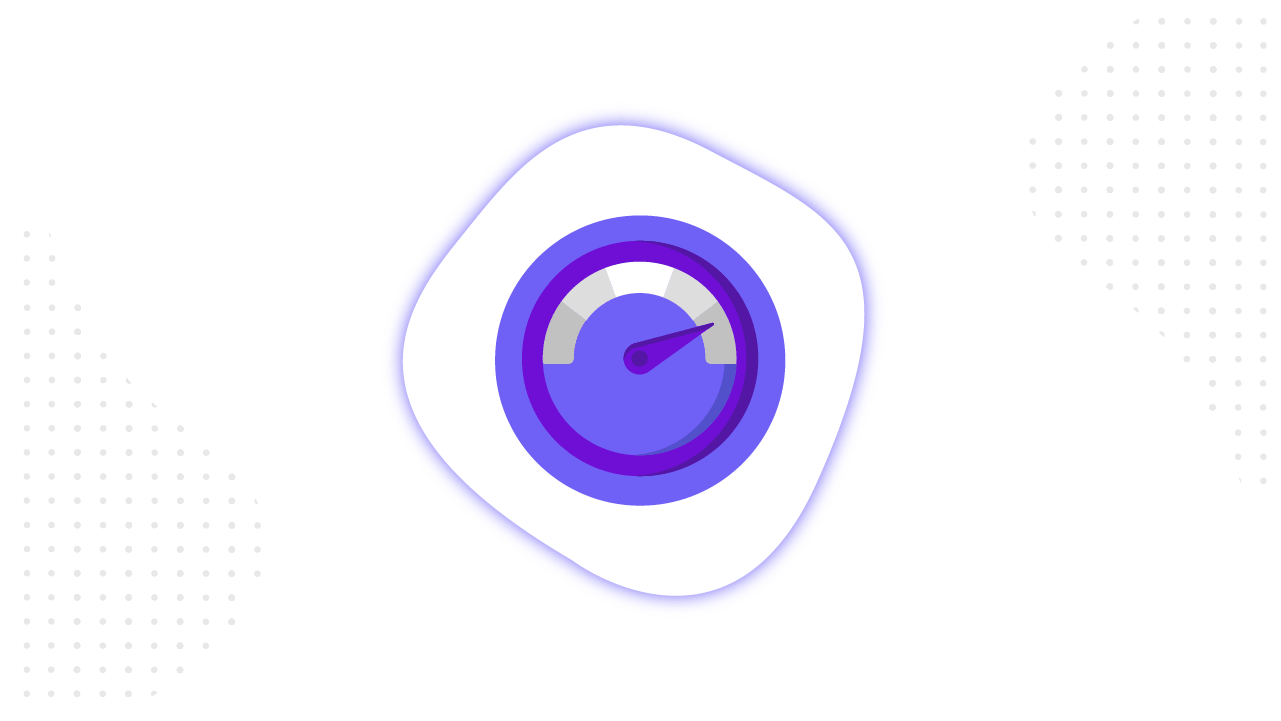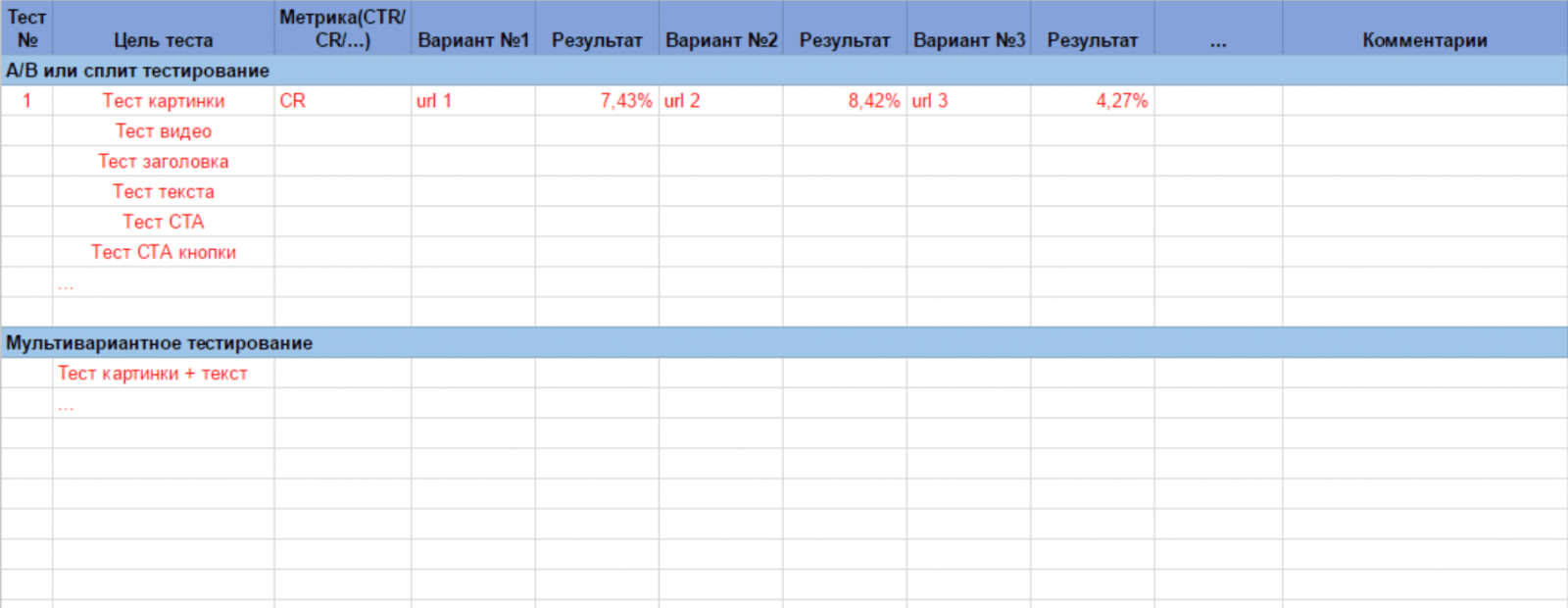Содержание
Planning and implementation of advertising campaigns are uneasy processes. You constantly need to have a finger on the pulse: ad fatigue happens, creatives get fed up, and the auction changes dynamically. You have to analyze data every hour and make adjustments accordingly. In this article, we will describe how to test and optimize results, and scale advertising campaigns successfully.
Testing
Regardless of the advertising budget size, we start the launch of advertising campaigns with a minimum budget of $5-15 per advertising group, depending on geography. We create the maximum number of targeting combinations, on average, with a budget of $50,000, we generate about 150-200 combinations. Different pools of targeting combinations are used for different target groups to find those that will match the KPI.
A separate set of messages is prepared and tested for each marketing persona to search for the most acceptable communication. Talking about messages, we don’t mean ad objects such as text, picture, video, etc. Messages are the context of the objects of the creative, which are a separate part in the testing list. When a detailed plan for testing is ready, the structure of an advertising campaign is built in order to realize a communication strategy according to the plan. The structure of advertising campaigns will be described in another article.
During the test period, we are looking for communication that works efficiently. Having analyzed ad campaigns, we redistribute the budget from ineffective groups to effective ones and analyze the potential of the audience: how much was covered and how much is still possible to reach.
In our practice, this period takes up to one month for B2C. However, it takes up to two months for B2B. Although, if we find the results earlier and stabilize them, then the scaling stage starts earlier.
What is the stabilization of results? This is the optimization of results metrics, both direct and derivative. Though, before moving on to the optimization, let’s summarize the testing stage:
- We create a list of target groups and load saved audiences (targeting combinations) for each of them. There can be one or more saved audience for one target group. You should proceed from budget headroom.
- Additionally, we create saved groups which are based on data, rather than on portraits of the target audience. Lookalike audiences from the base, lookalike audiences from events, saved audiences that are outside the target groups, but are found on the basis of data, for example, with the help of Inspector on Facebook.
- Then, we create a communication part for testing. If a brand has defined a global communication strategy, we can use it. If there is no such strategy, then we create our own. For this, we have our method which is the creative matrix.
- It is not necessary to look for a problem only when you are creating insights. The people’s problems are just one of the components. People do have desires, needs, opportunities, and other insights that you can use for influence. Each insight has to have a separate message which you need to test.
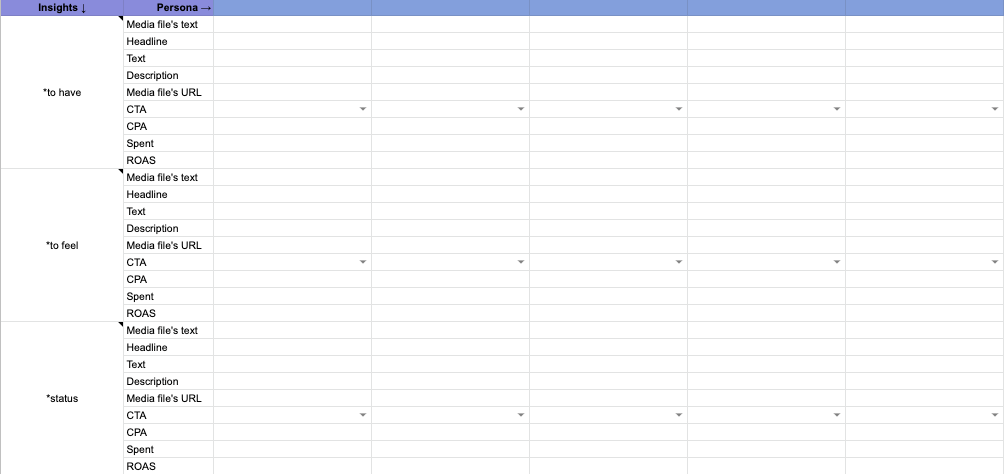
- Finally, we test objects of creatives such as a picture, a video, a button, CTA, etc. For this, we use the following accounting format:
With the help of different settings, you can achieve the same person. That’s why we test various targeting combinations in accordance with the prepared target groups on the one hand. On the other, we test the messages taking the prescribed text using specific insights, and only in the end, we move to testing creatives.
✔ Testing is in progress. How to stabilize the results?
Optimization and stabilization of indicators
Optimization is an automated process. This is an algorithm that works on Past Data. It optimizes ad impressions for targeted actions based on data collected for the previous period. The task of the optimization algorithm is to deliver the maximum number of results at the lowest price to those users who are more likely to do the targeted action. The algorithm works within a sample. The homogeneity of the data determines the accuracy of reaching the target audience, hence the stable result. If you start scaling in unstable conditions, you can get a variation in the results. Remember that scaling is only a multiplier regarding volumes. If the result and its derivative metrics (CPM, frequency, CTR, etc.) are stable, then by multiplying them, you will receive the same stable growth and only the CPA correlation. With the unstable performance, the results will fluctuate. For example, if you launch an ad campaign with a budget of $5 000 per day from the very beginning, the leaps will be significant, since there is still a little number of past data and the algorithm does not understand whom to show ads.
Impressions must first be collected before stabilizing them. Facebook demands 50 target actions every week for stable optimization. However, this is the optimal value, because you can get stable progress even with 5 results per week if the data on those who made the result significantly intersect. However, another situation is possible here. If 100 targeted actions are collected, but these will be users with entirely different data, the system will continue to search and refine data which will not contribute to stability. Thus, you will get only fluctuations in performance, hence it will be inefficient to scale.
Ways of helping the system collect data
If you control the optimization, you help the system collect data. For example, you run an ad campaign with the objective “Conversions”. Your results decreased because the optimized sample ended. If you don’t change the budget or the manual bid, the impressions stay the same, the reach drops, and the cumulative frequency goes up. In this case, you need to switch the optimization in the current advertising group to clicks or landing page view optimization. With this solution, you will get new results and be able to go back to conversion optimization, where the sample will become wider due to new additional conversions. Thus, the system will collect more data and be able to find new conversions. Another option for this case is to expand the sample, but you have to do it carefully.
It is also essential to exclude less effective targeting parameters. To do this, go to the breakdown and analyze which parameters are not profitable. Ad groups with the most expensive results show that the system makes mistakes. Therefore, the main task is to narrow the search of an audience so that the system can properly “learn” through more accurate hits, which can also reduce costs. When the system starts to hit the target audience, the indicators stabilize, and you can move on to the scaling phase.
Scaling
Your advertising campaigns started to bring stable results, all indicators are also constant, and there is enough data. What next to get more results?
4 ways of working with the scaling
1. Sample — an expansion of the social demography and detailed targeting within the certain geography.
One of the possible signals for expanding the sample or substitution of communication may be a drop of reactions and an increase of the cumulative frequency of impressions. You should strive to keep your frequency to 1, but don’t forget that other indicators should also be involved in decision making. It is vital to find common factors and not to make decisions based on interim reports. To determine when to extend the sample, you need to realize that the optimized impressions are finished. To understand this, it is enough to look at the graph, where the impressions remain at the same level when a budget or the level of the manual bid is constant, the frequency starts to increase, and the reach falls.
All these indicators suggest that ads have started to be shown to the same users. This is a direct path to efficiency loss in conversion campaigns. Therefore, it is necessary to expand the sample so that the system starts to look for new people. The increase in the frequency of impressions is permissible only in traffic or image campaigns, where the frequency does not have to be 1.
Approaches to sample expansion
You can expand the sample using:
► Detailed targeting adding interests, behaviors, etc.
► Option “Expand interests”.
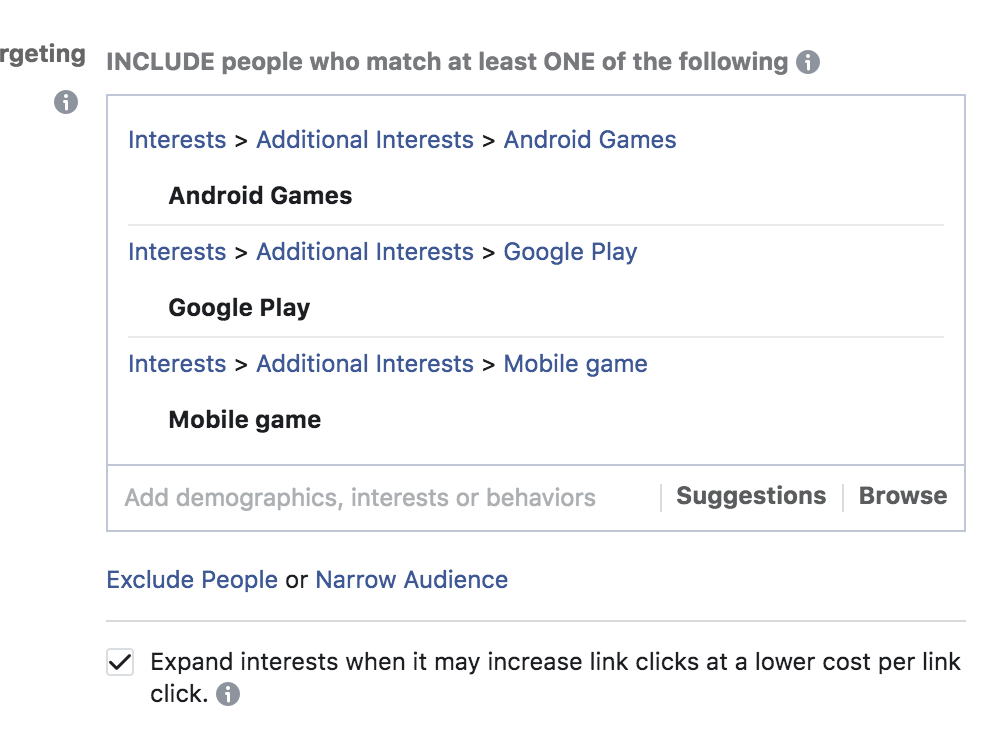
Targeting expansion gives the system the option to expand your target audience. It allows adjusting your interest-based targeting to reach more people who may bring you more and/or cheaper results. It’s available for ad sets that are part of campaigns that use the conversions, app installs, lead generation, post engagement or traffic marketing objectives.
As you’ve already understood, it’s better to use targeting expansion when there is a need. Therefore, it is not necessary to select this option at the beginning of the campaign launch.
► Expansion of social demography within the certain geography — gender, age.
Let’s return to ways of working with the scaling.
2. Geography. Entering new markets. If you need to test new markets, then it should be done in another campaign. If you are sure about a specific market, you can start expansion in the current campaign. The decision depends on your strategy.
3. Budget. When expanding the first and second points, we must increase the budget if we want to scale, otherwise, it will be just an expansion of the sample, including an optimized one.
If the indicators are stable, we increase the budget. From the start, it’s hard to calculate the ideal budget for your sample. Therefore, we begin to raise the bid gradually.
Increasing the bid only by 20% is one of the most common myths. You can increase the budget by 20 times, if there is a high demand, and the results will be stable and will not change in cost per result significantly. For example, this trick will easily work in a mass market where some product can have high demand. If there is a wide audience and high demand, it is always worth scaling globally and raising the budget boldly.
Consequently, if you raise the budget gradually, you can understand when the cost per result begins to change significantly. If you see that the audience is wide and the demand is high, you can increase the budget by more than 20%.
Let’s have a look at one case. You increase the budget by 50%, the result remains stable. You increase the budget by 50% again and the result is still steady. After another increase by another 50%, the cost per result changes significantly.
It means that by increasing the budget by 100% and just slightly correlating the cost, you will get a large-scale result with an effective cost per result, almost the same as it has been before the increase. At the same time, in the range of 100-150%, you need to make a correction. For example, by lowering the budget by 35%, you will come back to the price that suits you. Thus, you will find the optimal budget for the sample. However, if you change the size of your sample or raise the manual bid, it will not work. It’s important to look for the best budget without changing the conditions.
In our experience, there was a situation when the budget had been raised from $25,000 to $60,000 during a couple of hours. As a result, the scaling was stable. The CPA remained almost unchanged — $15. Then the budget has been raised from $60 000 to $100 000 and we have received a rise in the cost of the CPA by only $1. The following screenshot demonstrates the changes in efficiency and cost per conversion:
4. The manual bid.
It is better to work only with an automatic bid, because if you use a manual one, you cut off the number of auctions. This type of bid should be used only if you cannot find the “targeting + creative” combination that will help you use the automatic bid to achieve KPIs.
If you work with a manual bet, you need to consider two factors:
►CRO (Conversion Rate Optimization). You have to determine the level of the bid, using the automatic type, and then cut it by 10-25%. The auction is not linear and you get your volumes, but the cost per the result will fall;
► setting a daily budget of $500,000 or higher. This way, you can reach more auctions and get more volume. This nuance works with almost all RTB ecosystems, as competent systems look at the growth potential.
Duplicating the ad sets
Duplicating the effective ad sets does not mean scaling. This is just one of the possibilities of getting the results in total. This option definitely can help with arbitration. However, if you work with business, you should focus on the current ad set and its scaling.
If everything is set up correctly and a communication strategy is built accurately, then groups will work efficiently. The cost per result determines the message. The settings only correlate, because no one will make a decision based on what settings you have chosen for the advertising company or which background you have selected for the picture in the creative. It can influence the cost per result slightly, but only the content in the creative can change the effectiveness.
If everything is fine with communication, but the ad set stops working, the reason for this may be that the optimized sample has already been exhausted and you need to expand the sample or to look for other more effective groups. Therefore, it is necessary to try to expand the optimized sample so that the current group brings further results and you don’t start to collect new data. In our practice, it is possible to restore the effectiveness of the current group. Creating new groups and duplicating them is an extreme case.
Duplicating allows a new advertising group to find a new core in the sample. A new group is a new data history and new optimization. Therefore, the first hits are critical. During duplicating the system can reach the audience more accurately, which gives you the opportunity to see a new and more profitable picture. But there is the other side of the coin. As a rule, this approach is used for arbitration or during working with a wide audience, when the only geography is selected in targeting settings.
In the case of geography, you can only expand into new markets. Therefore, duplicating takes place in order to obtain new results. It is right to do this when advertising has become ineffective, and it is no longer possible to expand. If you cannot expand the optimized sample, then start anew, duplicating the ad group.
✔ Duplicating is not scaling, it’s only reactivation.
To Sum Up
Solving massive problems involves continuous work with the volume of data. You need to analyze the dynamics of ad campaigns daily to understand the effect of changes: is it worth expanding further in search of the optimal cost per result, or you need to go back, get data, and then expand, starting to get a steady result at a new level.
Remember the necessary conditions for scaling: data, sampling, and budget. Gradual and competent data collection at the first stage is the key to efficiency in the future. Collect as much data as possible, increase the budget gradually, and try to increase it by more than 20%. Determine the level of budget increase based on the level of demand and the size of your sample. Get the maximum without expanding the sample. When you get the maximum from the current optimized sample, start to expand it and find new profitable results.
In this article, we described many insights and our experience with a large number of projects that we have scaled around the world. This approach works with different niches. Try, experiment, but only after testing was effective. This is the key to success!
If you need help with scaling, we would like to assist you ⇨ just write to us in Messenger.
Subscribe to our Telegram channel and Messenger chatbot to get the latest news first!
If you have found a spelling error, please, notify us by selecting that text and pressing Ctrl+Enter.


